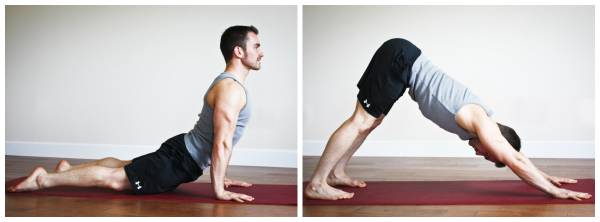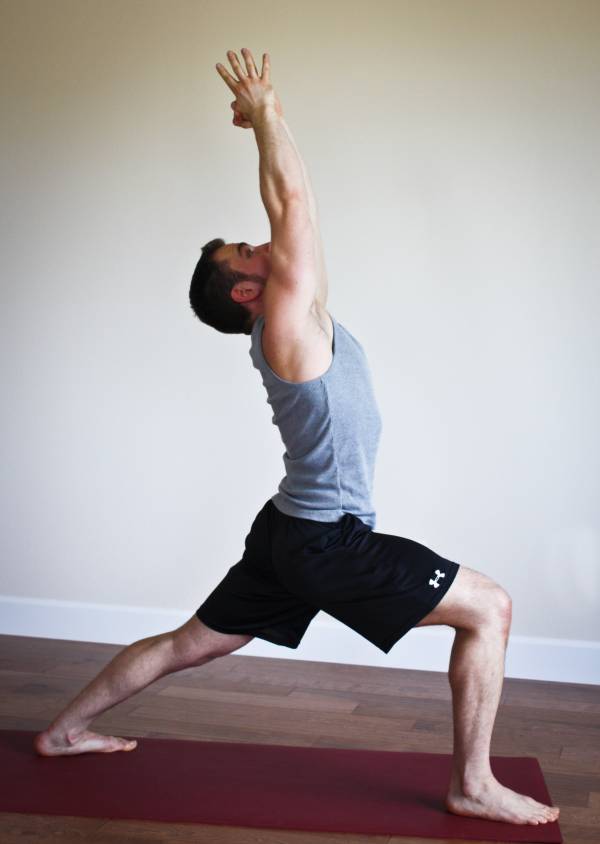Winter is coming. With cold weather on its way, your warm up is about to become even more important. That brisk fall feeling is about to usher in a season of tight, cold muscles and decreased mobility. For optimum performance all winter long and an injury-free return to spring, a serious warm up is your best friend. It’s time to step up your warm-up game.
Here are three explanations of why warm ups improve your performance, followed by three mobility-boosting exercises to ease you into your workouts.
Icy Temperatures, Frozen Performance
Cold tightens. Cold slows. It freezes you up, making your muscles sluggish and unprepared. This has two major implications for your strength-training routine:
- Cold, tight muscles are more prone to injury. Constricted into limited mobility, muscles tend to strain and pull under stress. Imagine trying to stretch a rubber band over a very big box. If you pull it hard and fast, it’ll snap in half. Slowly warm it up, and it will stretch to take the force of your pull. Now imagine putting that rubber band in the freezer for a while first. That’s your muscles in the winter. Flash-frozen rubber bands.
- Cold muscles don’t perform as well. They don’t operate at maximum range of motion, they don’t access their full potential strength, and they’re generally less ready for action. Consider your warm up a gentle awakening for your sleepy muscles, followed by a slow cup of coffee, chased by a jolt of espresso. Warming up muscles is the wake-up call that lets you get the most out of your workout.
Turn Up the Heat
Much of the power of the warm up, especially in the winter, lies in the “warm” part. Increasing muscle temperature loosens muscles for injury-preventing flexibility and mobility. It also eases them into movement so they can access their full range of motion. Properly warmed up muscles can execute exercises with proper form, for better results and fewer injuries. Warm muscles are also more responsive. They contract and relax more quickly, allowing for better performance.
“[I]magine putting that rubber band in the freezer for a while first. That’s your muscles in the winter. Flash-frozen rubber bands.”
Proper warm ups also increase all-over body temperature, so your body can work according to its amazing integrated design. If you’re the tin man, a good warm up is your oil can, getting the joints and muscles flowing so they can work together at maximum efficiency. Not only is this key for building functional, full-body strength, but it’s also vital for injury prevention. Nothing in the body works in isolation, and one unresponsive link in the chain can cause a major malfunction. A good warm up keeps your body running like a well-oiled machine.
Light a Bonfire, Not a Match
Warming up only works if you do it right. I hate to break it to you, but a couple static stretches and a five-minute jaunt on the treadmill isn’t going to cut it. In fact, static stretching can actually decrease the efficacy of your strength-training workout, though to what degree is up for debate. Some studies conclude that while static stretching doesn’t hurt, it doesn’t help either. Others, however, fall firmly in the anti-static stretching camp, concluding it’s actually detrimental to power output and prevents maximum performance.1,2 Either way, sitting and doing a couple half-hearted attempts at touching your toes isn’t going to cut it.
Neither is that just-enough-to-break-a-sweat treadmill run. A recent study found that as far as performance is concerned, a five-minute cardio warm up had the same effect as no warm up at all.3 A high-intensity, fifteen-minute warm up reduced strength. The lower intensity fifteen-minute workout, however, created a strength increase. Long and mellow trumps quick and intense, bringing the desired increased body temperature without the pre-routine fatigue.
Bodyweight Is Best
Bodyweight mobility exercises make the ideal warm up. As dynamic stretches, they provide the kind of movement proven to enhance muscular performance. They increase heart rate, but are of adjustable intensity, so you can craft the kind of longer, lower-intensity warm up found to be most effective. Best yet, bodyweight exercises are inherently focused on functional strength and mobility, making for an excellent full-body warm up.
For a fun and effective warm up, start your workout with these three mobility-boosting exercises. These enjoyable sequences of movements will help you gently ease into your workout and give you a pleasant start on even the chilliest winter days. Start slow, gradually picking up speed as you build heat. The sequences grow more active as the warm up progresses, so moving through them in the listed order is recommended.
1. The Morning Stretch:
Being lying on your back with your knees bent and feet hip width apart.
- Bridge lift: Inhale to lift your hips as high as possible, then exhale to drop them back down. Repeat three times.
- Seedling Stretch: Inhale to draw your knees to your chest, bringing your forehead to meet your knees. Exhale to extend the legs all the way out, engaging the abdominal muscles and bringing your legs over your head. Repeat three times.
- Roll-up: Roll up to seated on an inhale, then roll back down on an exhale. Repeat three times, finishing in seated.
- Cat Spine Stretch: Come to hands and knees. Exhale to drop your tailbone, arching your back like a cat. Inhale to lift it, rolling the shoulders back as the chest opens. Repeat three times.
- Cat Paw Stretch: Exhale to walk your hands forward, keeping your hips stationary as your chest drops towards the ground. Inhale to walk back. Repeat three times.
Come back to your back and repeat the sequence three to five times. You’ll move right from your last Cat Paw Stretch to the next sequence.
2. The Warm up Wave:
- Walk the Dog: Curl your toes under and lift your hips, straightening your legs as much possible in a “down dog” position. Shift your weight from foot to foot, curling through your toes and shifting your hips for around five breaths.
- Back-and-forth Lunges: Return to hands and knees. Inhale to lift your right leg, exhaling to bring the right foot between the hands into a lunge position. Inhale to bring your hands straight up as you sink into the lunge. Exhale to sink back, bringing the hands to the floor as you straighten the front leg. Repeat three times, then do the left side. Return to the first position. Bending your knees as much as necessary, walk the hands to the feet. Roll up slowly to standing.
- Shoulder-Squat Sync-Up: Stand feet slightly more than shoulder width apart, toes pointing out. Exhale into a low squat, reaching the arms out in front of you, extending through the low back so that the shoulder blades move apart (external rotation). Inhale back to standing, reaching the arms straight up. Exhale to interlace your fingers behind your back. Inhale to lift the chest, reaching the hands down as you pull the shoulder blades together. Exhale back into the squat. Repeat three times.
Place your hands on the floor and walk back to downward facing dog to begin again. Repeat the sequence three to five times. You’ll move from standing into the next sequence.
3. The Sun Salute:
This is a variation on a yoga sun salutation. It’s a traditional dynamic exercise designed to effectively and efficiently build heat throughout the body, making it a perfect wintertime warm up. Repeat five to ten times.
- Inhale. Reach your arms straight overhead, bringing palms together if possible. Look up.
- Exhale. Fold down, placing hands on the floor if possible, or on your shins. Bend your knees as necessary.
- Inhale. Lift to a half bend, looking forward as you straighten your back.
- Exhale. Step back to plank and lower through a push up.
- Inhale. Upward Facing Dog. Move your chest forward and up, rolling your shoulders down and back. Engage your thighs.
- Exhale. Curl back, lifting the hips into Downward Facing Dog.

LEFT: Upward facing dog; RIGHT: Downward dog
- Inhale. Warrior 1. Bring the right foot between the hands in a lunge. Turn your left foot to seal it to the ground. Come upright, raising your arms overhead.
- Exhale. Step back to plank and lower through a push up.
- Inhale. Come forward to Upward Facing Dog, as before.
- Exhale. Curl back to Downward Facing Dog, as before.
- Inhale. Repeat Warrior 1 on the left side.

Warrior 1
- Exhale. Step back to plank and lower through a push up.
- Inhale. Come forward to Upward Facing Dog, as before.
- Exhale. Curl back to Downward Facing Dog, as before.
- Inhale to jump both feet forward between the hands.
- Exhale. Fold forward, bending the knees as necessary.
- Inhale. Come to standing, arms overhead as in the first position.
While all this might seem like a lot of effort for a warm up, it’s worth spending some time preparing your body for your workout. Whatever warm up you choose this winter, treat it with the importance it deserves. After all, without this vital part of your workout, you might quickly find your results frozen solid all winter long.
More Like This:
- 3 Ways to Build Lean Muscle With Bodyweight Exercise
- 4 Tips for Acclimating to Winter Training
- Joint Pain and Weather: 4 Tips to Ease Discomfort
- New on Pulse Beat Fit Today
References:
1. Cramer, JT, Housh, TJ, Weir, JP, Johnson, GO, Coburn, JW, and Beck TW. “The acute effects of static stretching on peak torque, mean power output, electromyography, and mechanomyography.” European Journal of Applied Physiology. 93, no. 5 (2005): 530-9.
2. Kay, AD and Blazevich, AJ. “Effect of acute static stretch on maximal muscle performance: a systematic review.” Medical Science Sports Exercise. 44, no. 1 (2012): 154-64.
3. Dupont, Doug. ” Light Cardio Warm Up Best Before Strength Work.” Pulse Beat Fit. Accessed October 1, 2015.
4. Yamaguchi, T and Ishii, K. “Effect of acute static stretch on maximal muscle performance: a systematic review.” Journal of Strength Conditioning Research. 19, no. 3 (2005): 677-83.
5. Yamaguchi, T and Ishii, K. “Effects of static stretching for 30 seconds and dynamic stretching on leg extension power.” Journal of Strength and Conditioning Research. 19, no. 3 (2005).
Photo 1 courtesy of Shutterstock.
Other photos courtesy of Pulse Beat Fit.






